Choosing the Right Turning Tools
Successful composting begins with selecting the appropriate tools. For home gardens and small composting projects (under 500 liters), manual tools like three-prong rakes and wide-head shovels offer flexibility and control. If you prefer to reduce physical labor, small tumbling composters are an excellent choice – simply rotate the drum to mix materials while effectively controlling odors and preventing pests.
For small farms and backyard composting (500 liters to 5 tons), push-type compost turners increase efficiency by more than five times. These machines can handle compost piles 50-80 cm deep and are particularly suitable for windrow composting systems. When dealing with scales exceeding 5 tons, professional crawler-type turners and groove-type turners become necessary, as they ensure even turning while breaking up clumps to meet industrial production needs.
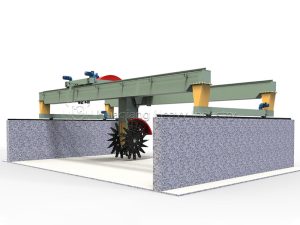
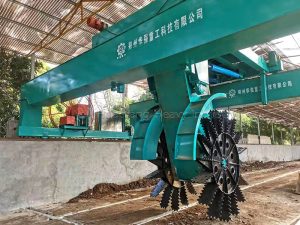
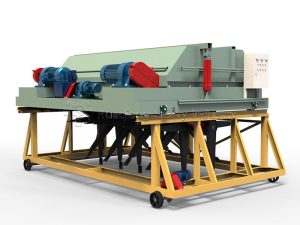
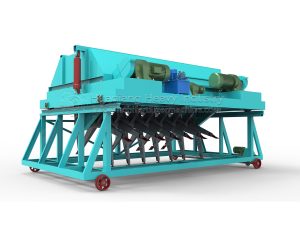
Selecting the Best Composting Equipment
No single compost machine fits all scenarios – the best choice depends entirely on your specific needs. For home and balcony gardening enthusiasts, tumbling composters stand out with their compact design and easy operation. These devices can transform kitchen waste and yard trimmings into rich compost within 2-3 months.
Small farms and livestock operations will find windrow turners most cost-effective. These diesel-powered machines can effectively handle mixtures of animal manure and straw, suitable for open field operations. For large organic fertilizer plants and sludge treatment facilities, hydraulic groove-type turners and double spiral turners provide automated solutions that can shorten the fermentation cycle to just one week.
In space-constrained areas or locations sensitive to odors, enclosed fermentation composters are the optimal choice. These closed systems feature built-in mixing and aeration devices, making them ideal for urban periphery and indoor composting environments.
Optimizing Turning Frequency
Turning frequency directly affects compost quality and fermentation speed. During the initial fermentation stage (first 1-2 weeks), turning every 2-3 days is crucial to provide sufficient oxygen for active microorganisms, promoting rapid temperature rise to 55-65°C, effectively eliminating pathogens and weed seeds.
High-Temperature Phase Management: During the high-temperature stage of weeks 2-4, turning every 3-5 days helps maintain optimal temperature ranges, accelerates organic matter decomposition, and prevents localized oxygen deficiency that causes unpleasant odors.
Maturation Phase Adjustment: Entering the cooling and maturation phase after the fourth week of fermentation, turning frequency can be reduced to every 7-10 days. The main purpose of turning at this stage is to evenly mix materials and promote complete maturation.
Special circumstances require specific handling: when compost materials are too wet, increase turning frequency to every 1-2 days to promote moisture evaporation; conversely, when materials are too dry, reduce turning frequency to 5-7 days after adding water to prevent excessive moisture loss.
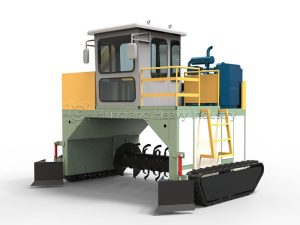
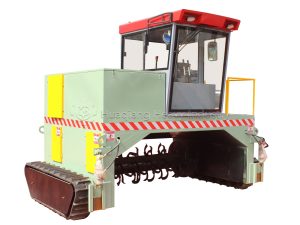


Professional Advice
Regardless of the tools and equipment you choose, remember that the core goal of composting is to create an ideal environment for aerobic microorganisms. By selecting appropriate tools and following a scientific turning schedule, you can not only improve composting efficiency but also obtain higher quality end products. Regularly monitor compost temperature, moisture, and odor – these indicators will help you adjust management strategies promptly, ensuring smooth progress of the composting process.
Optimizing Your Composting Operation with Professional Equipment
Successful composting operations require the right equipment selection based on scale and production goals. For medium to large-scale operations, choosing between a large wheel compost turner for windrow systems or a chain compost turning machine for groove-type fermentation can significantly impact efficiency. The complete organic fertilizer production line integrates multiple processes, beginning with the organic fertilizer fermentation process where advanced fermentation composting technology for organic fertilizer ensures optimal decomposition.
For operations targeting commercial fertilizer production, the equipment selection expands considerably. The bio organic fertilizer production line requires specialized equipments required for biofertilizer production including granulation systems. Producers can choose between a disc granulation production line using a disc granulator, or a rotary drum granulator system for higher capacity. The NPK fertilizer production line follows a sophisticated NPK fertilizer manufacturing process that may incorporate double roller press granulator technology for specific nutrient formulations.
Each fertilizer making machine serves a distinct purpose in the production chain. Following granulation, a drum organic fertilizer dryer ensures proper moisture control, while the complete roller press granulator production line offers alternative granulation methods. Understanding the NPK production process and selecting appropriate compost fertilizer machine components ensures efficient conversion of organic waste into valuable agricultural inputs, completing the sustainable cycle of nutrient recycling.


